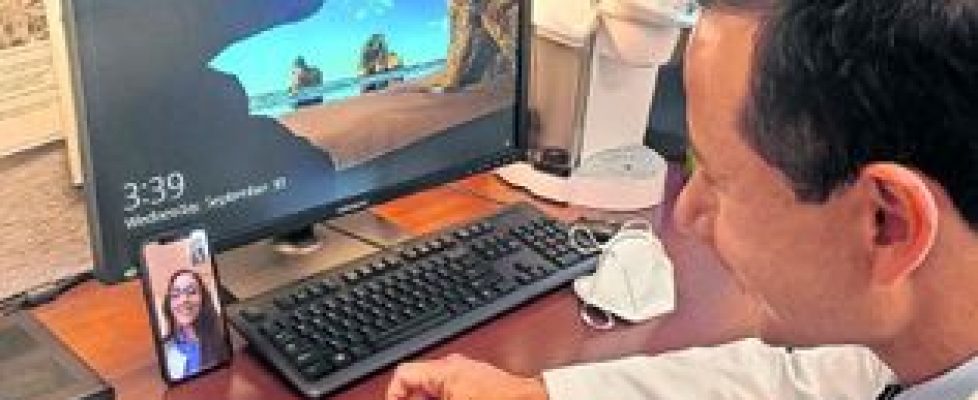Telehealth makes some aspects of cancer care virtual
Being able to speak in depth about her side effects via telehealth made all the difference for an Indianapolis woman who was struggling with painful side effects from hormone therapy treatments in the midst of the coronavirus pandemic.
It was sometimes challenging for Jill Minton to explain her pain to Dr. Anuj Agarwala, a Community Health Network physician specializing in oncology and hematology, considering the barrier of a computer screen, but he worked hard to understand the problem, she said.
Through trial and error, Agarwala had recommended three different hormone treatments, with the most recent one showing promise, so far, Minton said.
“It was a way to continue to give her the best care we could in-person and virtual. By doing some care by telehealth, we were able to minimize risk,” Agarwala said.
Welcomed opportunity
Though telehealth was viewed with skepticism by many before the coronavirus, it has proven a valuable tool for doctors to stay in touch with their patients during the pandemic.
For immunocompromised patients, such as those undergoing chemotherapy for a cancer diagnosis, telehealth was a critical way to keep them safe.
Agarwala embraced telehealth to keep track of his patients’ progress and monitor side effects.
For Minton, telehealth appointments were a welcomed opportunity to stay home in the midst of a pandemic. She and her husband were minimizing all unnecessary trips to keep COVID-19 out of their house.
Though doctor visits were moved online, Minton could still feel care and support from Agarwala and the nurses, she said.
“My oncologist and the nurses made me feel like they were in the room. It didn’t feel any different even though I was home and they were in the hospital or their home,” Minton said.
As COVID-19 began to spread in the area, Agarwala updated treatment plans to include telehealth visits in place of in-person office visits. Patients still had to go in for treatments, but integrating telehealth into the care regimen was a way to minimize potential exposure to the virus, he said.
From home, patients would video chat with him about their progress and setbacks, and hear results of recent tests.
Video component crucial
The video component is crucial, Agarwala says, as it is important for doctors to read facial expressions and see a patient’s physical appearance.
Telehealth was easy enough for most patients to get used to, especially patients who have been in treatment for awhile. Newly diagnosed patients, however, had to get to know Agarwala and trust him without any in-person interaction, he said.
“The majority of cancer patients are resilient,” he said.
Telehealth worked so well that Agarwala plans to offer it to patients who want it even after the coronavirus is no longer a threat. It is safe and convenient, he said.
Adding more telehealth options could give cancer patients more time with their families, and allow them to take off work less often, Agarwala said.
Another advantage is the ability for a patient’s family to join the call. As family members often serve as caregivers, telehealth allows doctors and nurses to hear another perspective on a patient’s progress and setbacks.
Remembering routine care
As medical care begins to normalize, Agarwala advises patients to return to their routines as much as possible, and that includes routine appointments and care.
Preventative care screenings, such as mammograms and colonoscopies, are a key way to catch cancer early and give patients a better chance of survival, according to the American Cancer Society.
“It is important for people to get back in touch with their medical provider, whether via telehealth or in-person,” Agarwala said. “I hope that people won’t forget about acute issues or preventative medicine.”

